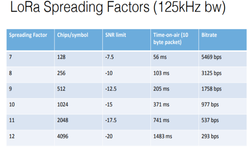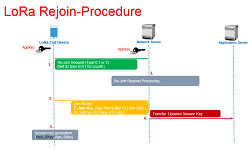LoRa (Long Range) End Device Classifications
LoRaWAN is a Low Power Wide Area Network (LPWAN) specification for the wireless Internet of Things devices. The LoRaWAN specification provides seamless interoperability among smart things without the need of complex local installations and gives back the freedom to the user, developer, businesses enabling the rollout of the Internet of Things.
A LoRa network architecture is typically connected in a star-of-stars topology where End Devices are connected to gateways. Gateways are transparent bridge relaying messages between end-devices and a central network server in the backend. Gateways are connected to the network server via backhaul which is standard IP connections while end-devices use single-hop wireless communication to one or many gateways. All end-point communication is generally bi-directional, but also supports operation such as multicast enabling software upgrade over the air or other mass distribution messages to reduce the on-air communication time.
Communication between end-devices and gateways is spread out on different frequency channels and data rates. The selection of the data rate is a trade-off between communication range and message duration. LoRa data rates range from 0.3 kbps to 50 kbps. To maximize both battery life of the end-devices and overall network capacity, the LoRa network server is managing the data rate and RF output for each end-device individually by means of an adaptive data rate scheme.
LoRa Devices Classification
Based on LoRa MAC layer operation there are three classes of end devices in LoRa network. The classes are defined as Class A, Class B and Class C. These three different classes devices are designed to address different needs for the wide range of applications. All three classes based end devices are bi-directional in nature for communication and this classification is done.
Class A (All): Class A end device allows bi-directional communications. In these end-devices uplink transmission is consist of one slot and while downlink consists of two short. The Uplink slot scheduled by the end-device based on its own communication needs.This uplink slot with a small variation based on a random time basis (ALOHA-type of protocol).
Class A devices require the lowest power among all category and useful for the applications which only require downlink communication from the server shortly after the device has sent an uplink transmission. Downlink communications from the server at any other time will have to wait until the next scheduled uplink.
Class A Devices Applications:
- Fire Detection
- Earthquake Early Detection
Class B (Beacon): Class B devices also bi-directional end-device with scheduled receive slots. In addition to the Class A random receive windows, Class B devices uses extra downlink slot at scheduled times. In order to start its downlink slot at the scheduled time, the device receives a time synchronized Beacon from the gateway. This allows the server to know when the end-device is listening.
Class B Devices Applications:
- Smart metering
- Temperature Reporting
Class C (Continuous): Class C device can listen all the time except when it needs to transmit something. This device has maximal downlink slots. Class C devices need more power as compared to Class A and Class B. These device has the least latency for data transmission between server and end devices.
Class C Devices Applications:
- Fleet management
- Real Time Traffic Management
LoRa Device Classes Comparision
| Class Type A | Class Type B | Class type C |
|---|---|---|
| Battery Powered | Low Latency | No Latency |
| Bidirectional with 1 UL+ 2DL Slot | Bidirectional with scheduled Downlink slots | Bidirectional Most of the time listening mode |
| Unicast messages | Unicast and Multicast messages | Unicast and Multicast messages |
|
|
|
| End-device initiates communication (uplink) | Extra receive window | Server can initiate transmission at any time |
| Server communicates with end-device (downlink) during predetermined response windows | Server can initiate transmission at fixed intervals | End-device is constantly receiving |










